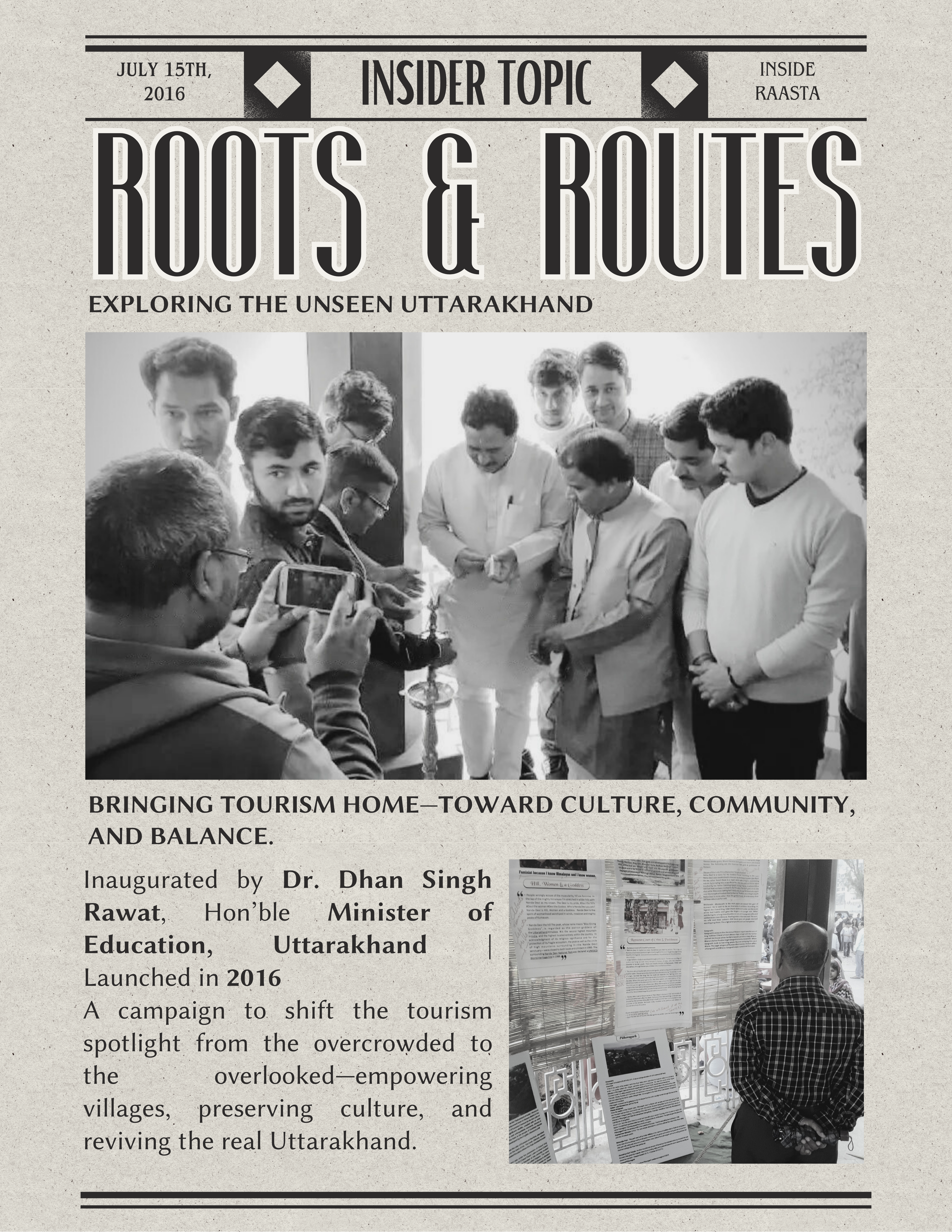The Challenge
Rethinking Tourism for Inclusive Development
For years, the narrative of tourism in Uttarakhand has revolved around a few iconic destinations— Nainital, Mussoorie, Rishikesh , and the sacred Char Dham circuit. These places have drawn consistent crowds and brought visibility to the state, but this intense focus on limited zones has created an uneven landscape. Some areas have faced seasonal overcrowding, environmental stress, and infrastructure strain, while large swaths of the state—often richer in culture and ecological diversity—have remained overlooked and economically isolated.
In these lesser-known regions lie stories untold, traditions quietly preserved, and landscapes as breathtaking as their famous counterparts. Yet, the benefits of tourism—economic opportunity, cultural exchange, and infrastructural development—rarely reach these untouched corners. With the village economies struggling and youth migrating to cities for livelihood, it became imperative to ask: can we reimagine tourism not as an industry confined to postcard destinations, but as a tool to revive forgotten spaces and connect people to their roots?
Our Response
The 'Roots & Routes' Campaign
In 2016, Raasta Research & Development initiated the "Roots & Routes" campaign—an effort to diversify the tourism narrative and redirect attention toward the unseen Uttarakhand. The campaign was formally inaugurated by Dr. Dhan Singh Rawat, Hon’ble Minister of Education, Uttarakhand, marking the beginning of a movement grounded in local identity, sustainability, and inclusivity.
At its heart, Roots & Routes sought to shift tourism from being a passive gaze upon beauty to an active engagement with place. The idea was to promote lesser-known locations not through commercial gloss but through storytelling, visual documentation, and authentic representation. Each village, with its unique legends, architecture, crafts, food traditions, and ecological wealth, was viewed as a living archive of culture that deserved recognition and respect.
The campaign emphasized responsible and immersive travel—journeys where tourists become participants, not mere spectators. By consciously redirecting tourism influx to remote and culturally rich areas, the project aimed to distribute economic opportunities more equitably across the state. Simultaneously, it worked to document the intangible heritage of the region—oral histories, folklore, rituals, and everyday practices that shape the rhythm of village life.
Promote tourism beyond the obvious
Encourage exploration of lesser-known villages instead of mainstream tourist spots.
Celebrate local identity and sustainability
Reinforce Uttarakhand's unique traditions, values, and ecological balance.
Transform tourists into participants
Inspire immersive experiences where visitors engage with local life, not just watch.
Preserve oral and intangible heritage
Record folklore, rituals, and everyday life that shape cultural identity.
Document and honor village diversity Highlight architecture, crafts, food, and legends as cultural treasures.
Implementation
Culture, Community, and Communication
Roots & Routes unfolded through a deeply participatory and place-based approach. It began with on-ground research, where our teams worked closely with local youth, schools, and panchayats to identify culturally significant locations and stories waiting to be told. This was not just mapping land, but mapping memory and meaning.
The second layer of the campaign focused on content creation—short films, digital travelogues, visual archives, and cultural documentation that highlighted the people and practices of these regions. Rather than polished promotional ads, we built narratives that felt real, warm, and rooted.
Village-level activations formed the third pillar of the campaign. Cultural walks, heritage trails, school exhibitions, and homestay workshops helped communities see the value of their own knowledge systems and traditions. These local interactions helped foster a sense of ownership and pride while also preparing villages to host travelers in ways that were both dignified and sustainable.
Parallel to the grassroots work, we also engaged with state departments and tourism boards, advocating for new tourist circuits to be included in official planning and investment. The vision was to embed these alternative routes into the long-term blueprint of state tourism development.
Impact
Building an Economy Around Identity
The impact of Roots & Routes rippled across multiple dimensions. In the pilot regions, there was a noticeable increase in domestic travelers and offbeat explorers drawn by the campaign's storytelling. Homestays began to generate modest yet meaningful income. Local guides—often young men and women who had never considered tourism a career—started conducting heritage walks in their own dialects, with pride and purpose.
Perhaps the most powerful shift was emotional. Communities that had long felt forgotten began to feel seen. Their stories were not only heard but valued. This fostered a cultural revival—elders shared songs and tales that hadn’t been told in decades, children began participating in traditional crafts, and schools became centers of cultural memory.
The campaign also introduced a model of tourism that didn’t treat nature and culture as commodities but as relationships to be nurtured. Preservation naturally became part of the process—when people felt proud of their place, they also felt responsible for it.
More than numbers or metrics, the success of Roots & Routes lies in the shift of narrative—from Uttarakhand as a postcard paradise to a place where every path leads to a story and every village holds a history waiting to be told.
The Journey Continues
Roots & Routes was never meant to be a one-time campaign. It was envisioned as a long journey toward rebalancing, toward realigning tourism with local aspirations and ecological consciousness. It was a movement to take tourism home—to let it serve the people who have been its silent custodians.
Today, as tourism continues to evolve and the world seeks more meaningful connections with place and people, the philosophy behind Roots & Routes becomes even more relevant.
At Raasta Research & Development, we carry this spirit into all our work—believing that true development speaks the language of the land, and that every unseen road holds the potential to lead us back to who we are.


